The celebrated Mr. K flies again to back-up territory…
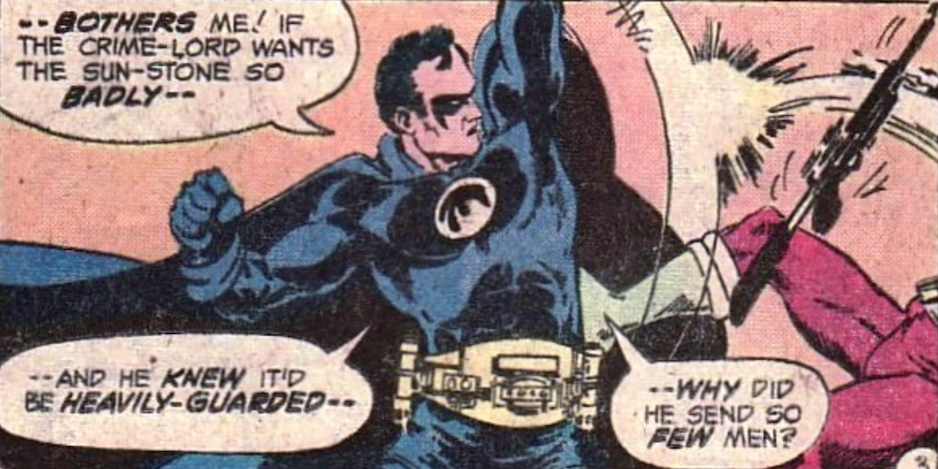
Earlier this month, 13th Dimension columnist extraordinaire Paul Kupperberg put together a groovy piece on his 13 fave back-up stories. Here, Paul goes back to that fertile ground for another 13 — only this time it’s stories he wrote himself.
Dig these entertaining insights — and also check out Paul’s latest book: Son of the Unpublished Comic Book Scripts of Paul Kupperberg (click here to order).
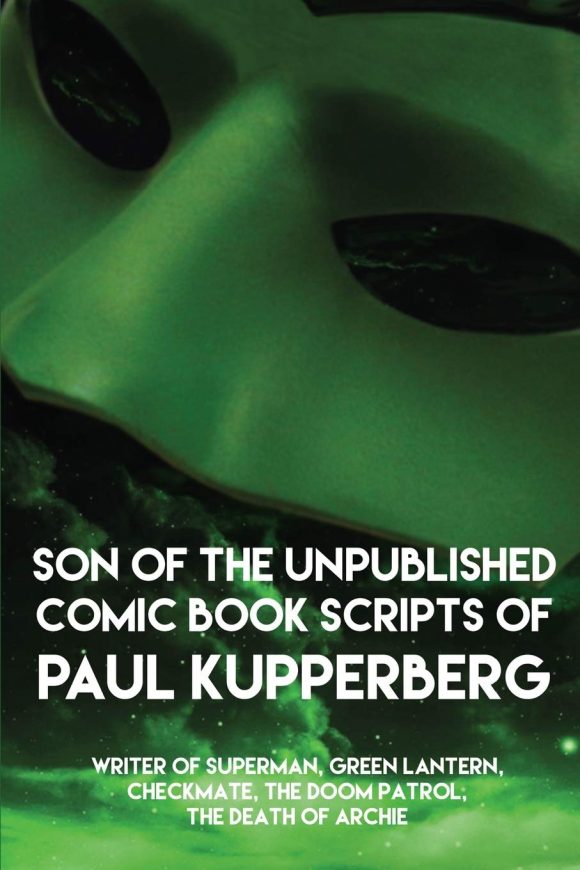
—
By PAUL KUPPERBERG
As I was saying earlier this month, mainstream comics used to be lousy with anthology titles that needed to be filled with short stories and back-up features. When I broke into the business in 1975 at Charlton Comics, a majority of their titles were anthologies in genres ranging from horror and romance to Westerns and war.
DC Comics, the next publisher I wrote for, also had a good number of anthologies on the schedule (House of Mystery, House of Secrets, Ghosts, Tales of the Unexpected, Weird War Tales), but more to the point of this column, they also ran a lot of back-up stories in their superhero titles.
I don’t know if this was a time-saving device (a back-up meant a shorter lead story with a faster turnaround) or just a holdover from the olden days when practically every comic book featured two or three stories per issue. Whatever, all the back-ups and anthology titles meant ample opportunity for newbie creators just breaking in to practice and learn their craft, as well as a place for established creators to pick up a few extra bucks between deadline assignments.

By the way, while all back-ups are short stories, not all short stories are back-ups, which I’m defining for our purposes here as any non-lead story featuring an established character(s). A generic horror tale for an issue of Ghosts is a short story; the ongoing series of stories that I scripted for Ghosts in 1981 featuring the long-running Dr. Terrence Thirteen, the Ghost-Breaker are back-ups.
I learned a lot doing short stories (usually 5- to 10-pagers), especially those written for anthology titles that didn’t have the benefit of familiar, ongoing characters to jumpstart the reader’s involvement in the story. Often, all the real estate you have to work with is five or six pages in which you have to introduce your characters, establish their world, and set up the situation before you can tell their story. But with a back-up, the heavy lifting of character and world building has already been established, needing only an expository caption or balloon or two to get things running.
So, without any further ado, MY 13 FAVORITE COMICS BACK-UP STORIES (THAT I’VE WRITTEN).
All are from DC, as it happens. In chronological order:
—
Superman Family #182 (March 1977). As a diehard Superman fan growing up, I was positively giddy (and somewhat intimidated) by having my first sale to DC Comics be a “World of Krypton” back-up story for Superman Family: “The Stranger.” Denny O’Neil was the story editor (although as I recall, it was editorial coordinator Paul Levitz who called me with the assignment) which was equally intimidating, but not half as much as it would have been if I’d been doing the assignment for Superman editor Julie Schwartz. That would come later.
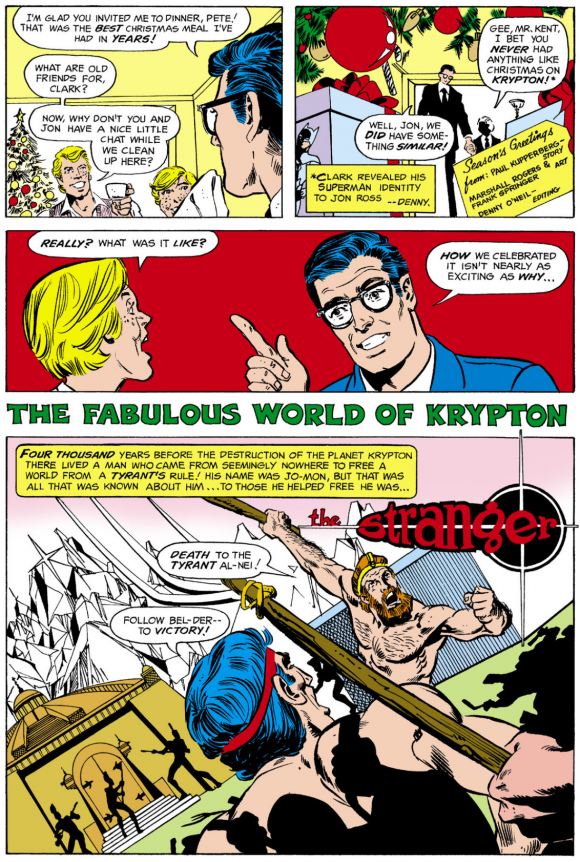
At any rate (and page-rate wise, beginners at DC were paid $15 a page), as the issue (the first DC Dollar Comic) went on sale in mid-December 1976, I was tasked with writing a holiday themed story, a sort of “Christmas on Krypton” tale. In a brief conversation with Denny, he suggested a sci-fi take on the Christ story, with the Kryptonian “savior” a stranger who tries to bring peace in a conflict between the people and an oppressive government and sacrifices his life for that cause.
While I didn’t get to write Superman, I did get to put words in the mouth of Clark Kent, who’s telling the story to Pete Ross’ son on Christmas Eve. The best thing about this story? It was penciled by an artist new to the business — Marshall Rogers. It was inked by the legendary Frank Springer, which made for a weird but cool combination.
—
Adventure Comics #453-455 (July-Sept. 1977). My short association with Aquaman began through a series of back-ups, beginning with a three-part Aqualad story in Adventure Comics. The stories (“Aqualad — Who Is Thy Father?”, “Sins of the Father,” and “Legacy”) featured art by Carl Potts and Joe Rubinstein and branched out of the David Michelinie-written continuity in the monthly Aquaman title.
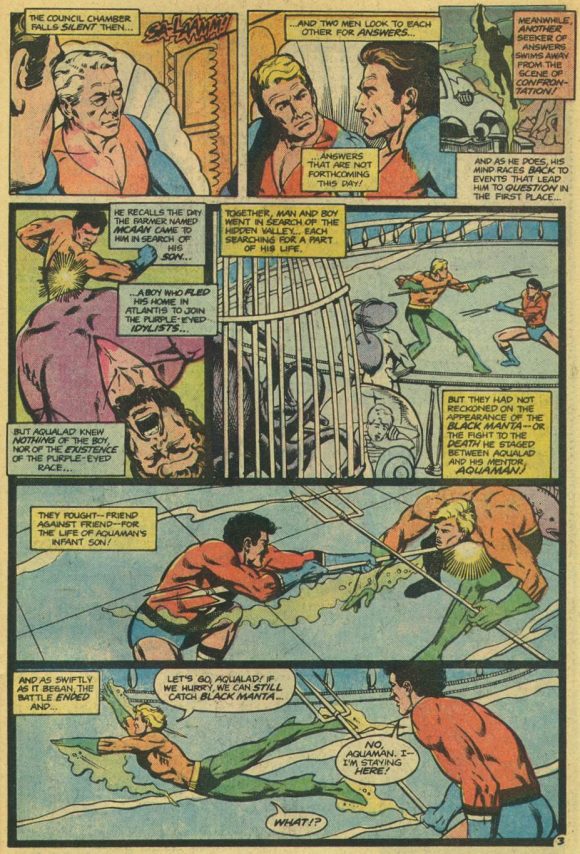
Adventure Comics #453
The story titles pretty much give it away: The “orphaned” Aqualad, long raised by Aquaman, begins to question their relationship after Aquababy is kidnapped by Black Manta and he discovers the underwater race of purple-eyed people of the Hidden Valley that he comes from (apply salad dressing jokes here). But there’s something rotten in the Valley and, apparently, in Aqualad’s heritage.
—
Aquaman #58-60 (Oct.-Dec. 1977). Meanwhile, in the back of Aquaman I scripted another three-part back-up that was a spin-off from the title’s main story, this one starring Mera in “Return to Disaster,” “Kingdom of Doom,” and “The Edge of Nowhere” as she embarks on a quest to save the life of Arthur Curry Jr., aka, Aquababy. Arted by Juan Ortiz and Vince Colletta, the whole thing was deliciously melodramatic and (SPOILERS!) she fails.
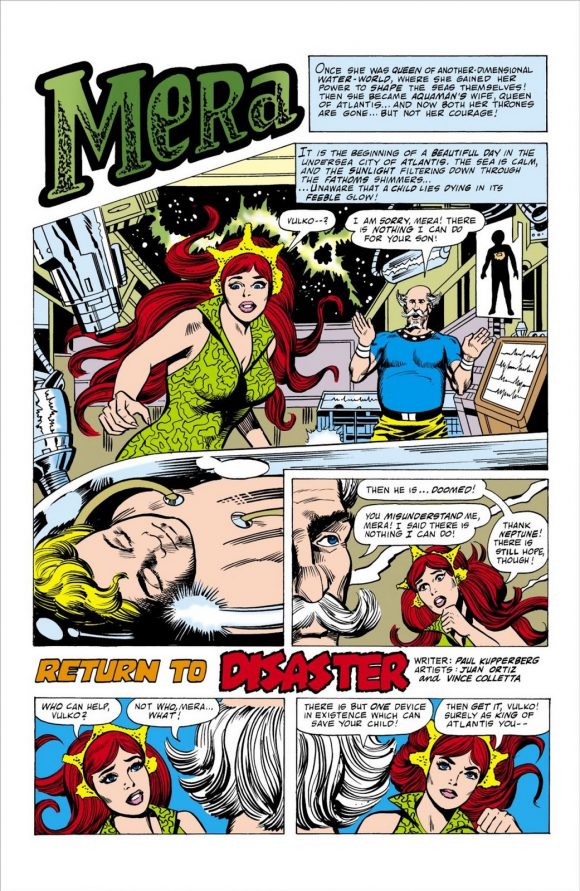
Aquaman #58
As a reward for my back-up services, I was given the last couple issues of Aquaman to script, including the aftermath of dead Aquababy (all recently reprinted, my back-ups included, in the Aquaman: Death of a Prince hardcover from DC Comics), as well as the first handful of his post-cancellation feature in Adventure Comics, the upside of which was that I would get to work with both Don Newton and Don Heck.
—
The Flash #265 (Sept. 1978). I would guess that Alex Saviuk and I have made about 400 pages of comic books together over the years. Our first collaboration was a Kid Flash back-up, “Secret of the Shooting Star,” inked by Bob Smith. As a one-off back-up, the story couldn’t have any lasting impact on young Wally West and I’d say I achieved that goal in spades.
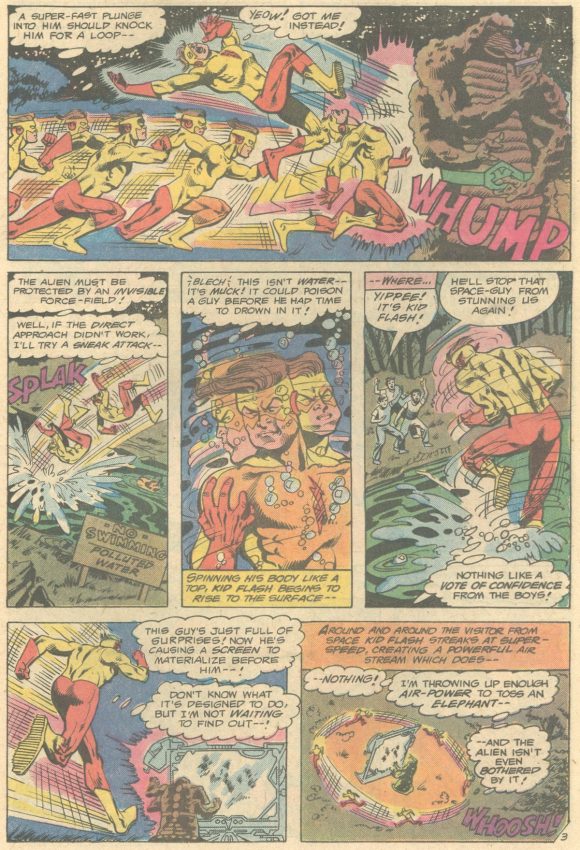
—
Superboy and the Legion of Super-Heroes #249 (March 1979). “The Arctoraan Jewel Case,” if memory serves, is the only solo Legion of Super-Heroes story I ever wrote. My other work on the title had been either from plots by regular writer Paul Levitz or a timeline/plot by E. Nelson Bridwell for the World of Krypton miniseries.
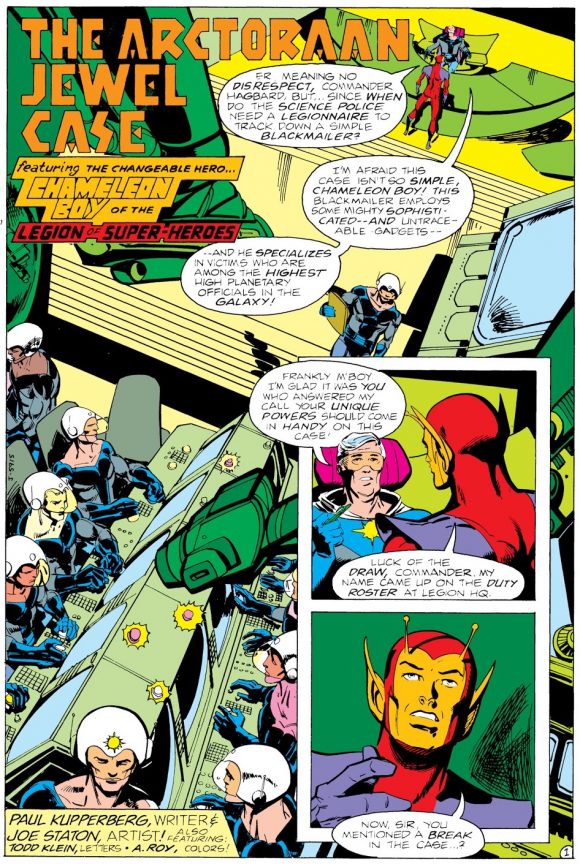
Two things about “The Arctoraan Jewel Case,” featuring Chameleon Boy, that stand out in my memory: The first is the lovely art by Joe Staton, one of the increasingly rare times he inked himself, and the second is that it’s a total shaggy dog story. It’s a sort of mystery that involves a rare “Arctoraan Jewel” being paid as a ransom and Cham shapeshifting into the display case used to transport the jewel to catch the bad guy.
Get it?
—
Superman Family #194 (March 1979). From Superman Family #183 to #194, I wrote a regular Nightwing and Flamebird back-up series. For you young’uns, the original Nightwing and Flamebird were the secret crimefighting identities of Superman and Jimmy Olsen on their visits to the bottle city of Kandor; for this series, the Nightwing and Flamebird IDs were taken over by Kandorian scientist and Superman lookalike Van-Zee (also member of the Superman Rescue Squad… oh, yes there was!) and Ak-Var, his lab assistant and his daughter’s husband.

Carl Potts and Al Milgrom drew the first episode, followed by the team of Ken Landgraf and Romeo Tanghal, and ending with #194’s “Showdown,” with art by Marshall Rogers. I was sorry to see them go, but at least we went out with a bang and a “Kawhmp.”
—
Men at War #17-18 (June-July 1979). The first of a pair of two-part back-ups I wrote for this short-lived war title featuring Rosa, Master Spy, a nineteenth century mercenary spy and master of disguise. Hence “Rosa,” as in “tabula rasa,” or “blank slate.”
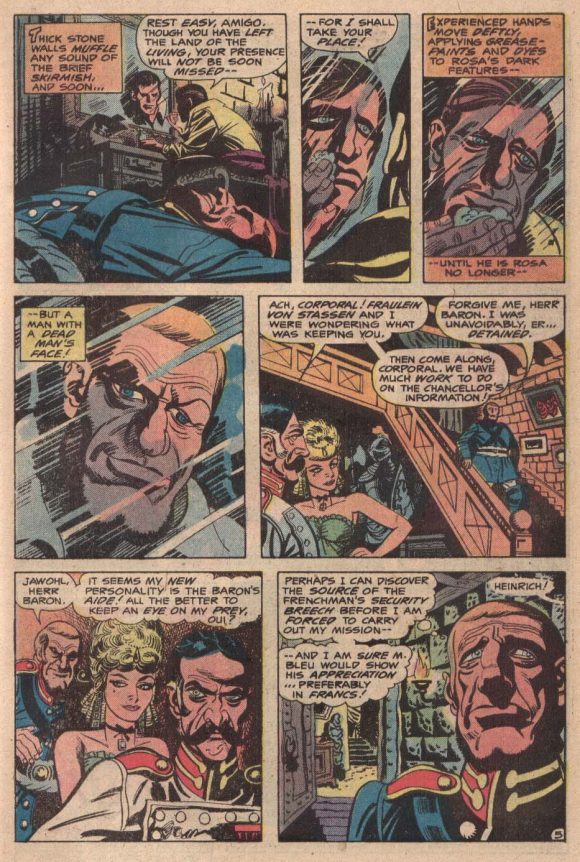
Men at War #17
I had no idea who would be drawing it when I turned in the script for “The Castle Rhinehart Affair” so I was pleasantly surprised (to say the least) when I saw it had been assigned to Golden Age great Jerry Grandenetti. You know what they say: Great art can save a bad script, but bad art can destroy a great script. I’ll leave it to you to categorize the script, but Grandenetti’s art sure didn’t hurt it none!
—
Detective Comics #485 (Aug. 1979). Dead men tell no tales, but they leave behind a lot of clues. At least that’s the way I wrote “The Case of the Cavorting Corpse,” a Robin story from his New Carthage college days. In it, a dead body is propped up in a remote-controlled car to finalize a crooked diamond deal. It’s all MacGuffin all the time, but it was drawn by Kurt Schaffenberger (inked by Dave Hunt) and one of only a handful of stories I wrote that nibbled around the Batman universe.
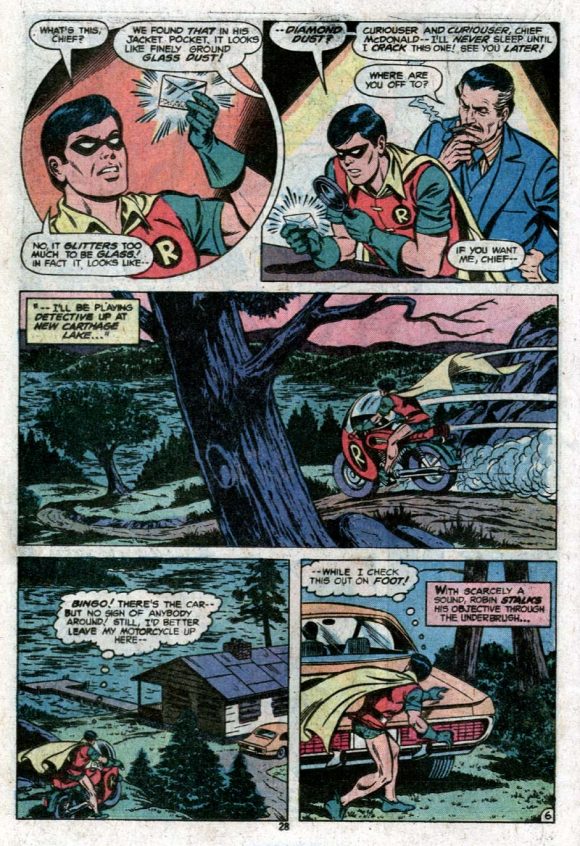
—
Detective Comics #489 (April 1980). This was another one, featuring Gotham City’s Commissioner Gordon, in his cover-blurbed “first solo story.” Having watched the Batman ’66 series as a boy, I could never quite get over my impression of Jim Gordon as the clueless, fumpfering fool Neil Hamilton played him as. And while he didn’t come off as badly in the comics, he was still pretty much just the guy who lit up the Bat-signal because he always needed Batman’s help.
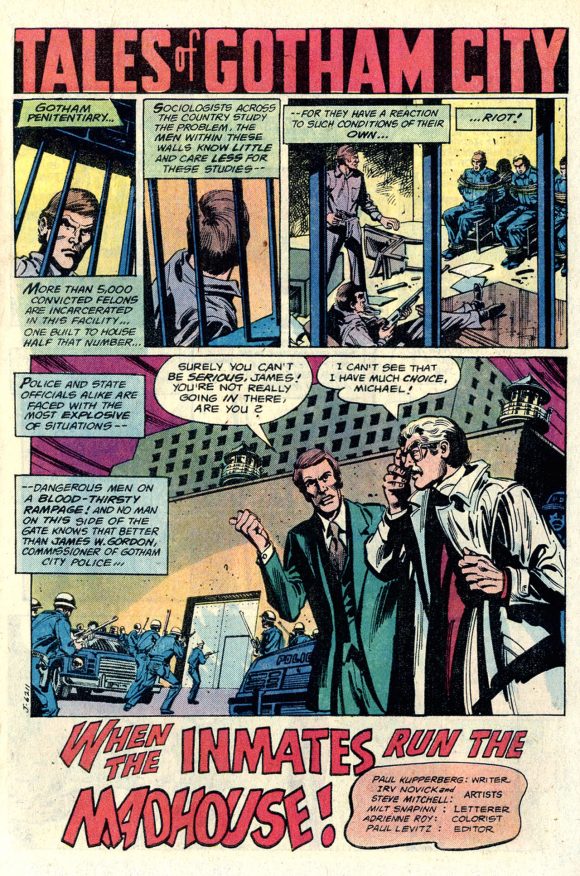
But a cop doesn’t rise through the ranks to become commissioner of a major metropolitan police force by being a wiener, so when I was given the opportunity to script a solo story, I wanted it to be one where he gets to show off Jim Gordon, the cop, not Commissioner Gordon, Batman’s bureaucratic cape holder.
Also, Irv Novick (inked by Steve Mitchell) art. Talk about your kick-ass right there!
—
Ghosts #99, #101-102 (April, June-July 1981). Back in the early-1970s, writer Michael Fleisher, with artist Jim Aparo, brought his own unique touch to the Spectre, then cover featured in Adventure Comics. The Spectre really lived up to the whole “spirit of vengeance” thing, famously slicing, dicing, igniting, and otherwise killing off the bad guys in the most horrific ways then allowed under the Comics Code.
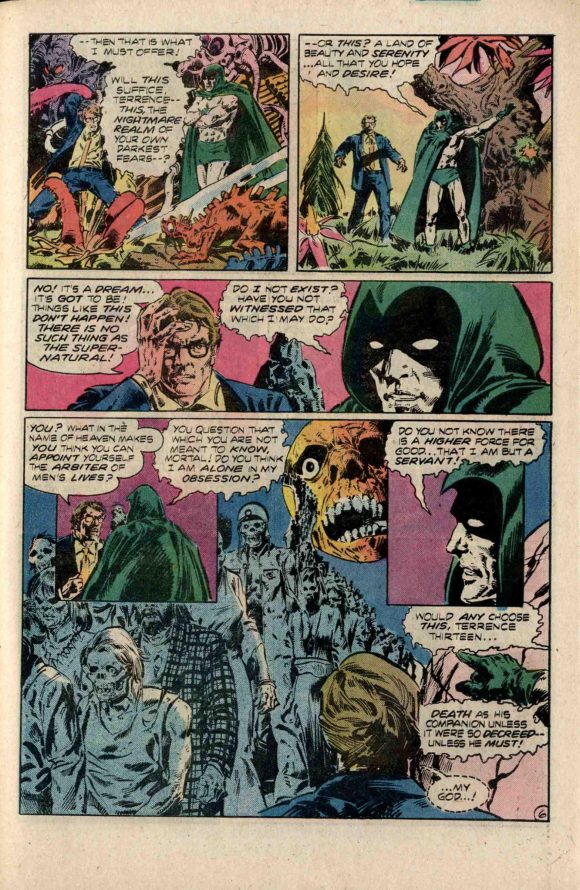
Ghosts #99
In 1981, I used that meaner, deadlier Spectre as a guest-star in three of the eight installments I wrote of “Dr. 13 — Ghost Breaker” for Ghosts. The character of Dr. Thirteen, the skeptic of the supernatural, had been around for a while (he first appeared in Star-Spangled Comics in 1951, created by an unknown writer and artist Leonard Starr), and, frankly, I found him to be a bit of a doofus. Every story was the same thing: he tries debunking a haunting and fails. Buy a clue, Terry! You’re in the DCU. There are such things as ghosts!
For the Ghosts run, we retired Thirteen from active debunking, freeing him to write about his experiences, but the supernatural keeps pulling him back in! In “Death… and the Spectre,” “The Haunted Hospital,” and “Voodoo” (featuring art by pencilers Michael Adams and Howard Bender, and inked by Rodin Rodriguez and Tony DeZuniga), Thirteen has daddy issues and is once again forced to confront his skepticism.
—
Green Lantern #148 (Feb. 1982). The first installment of the new “Tales of the Green Lantern Corps” back-up feature and the introduction of “Ch’p,” my one lasting contribution to the Green Lantern mythos, with art by Don Newton and Dan Adkins. ’Nuff said.
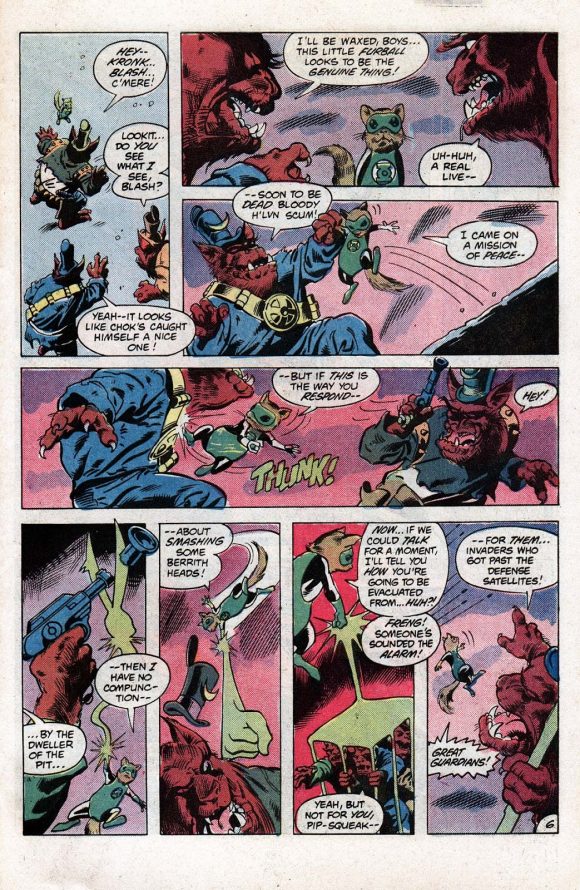
—
Warlord #55 (March 1982). I introduced another character in this back-up, the first episode of a sword-and-sorcery series, Arion: Lord of Atlantis: “Atlantis” with art by co-creator Jan Duursema. That was followed by seven more back-up installments and 35 issues in its own title (plus a giant-size special to wrap up the series).
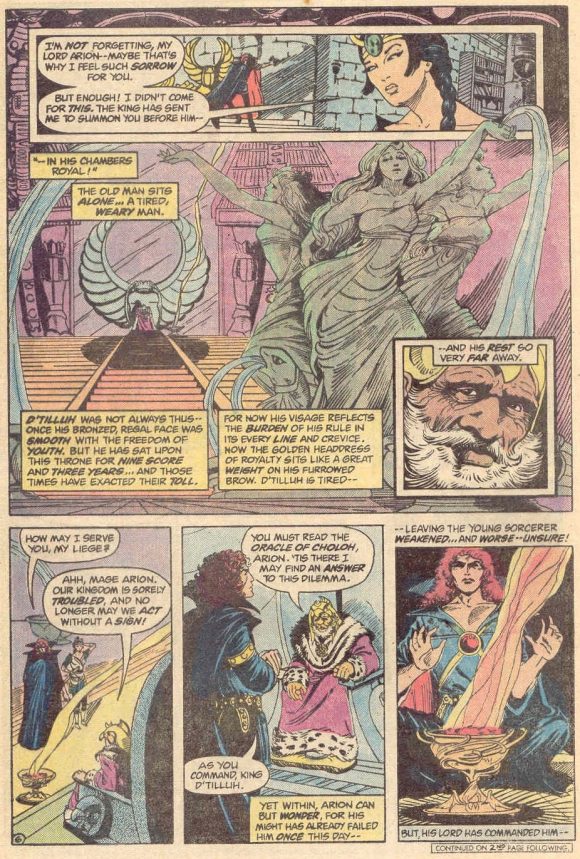
—
Superman #403 (Jan. 1985). On the one hand, the back-up story “Clark Kent — Super-Hero from Krypton” represents a lot of what was goofy about many of those later Julie Schwartz Superman stories. On the other hand, it was one of the few instances when I was able to tie Superman in with some of the continuity from my concurrent run on the New Adventures of Superboy.
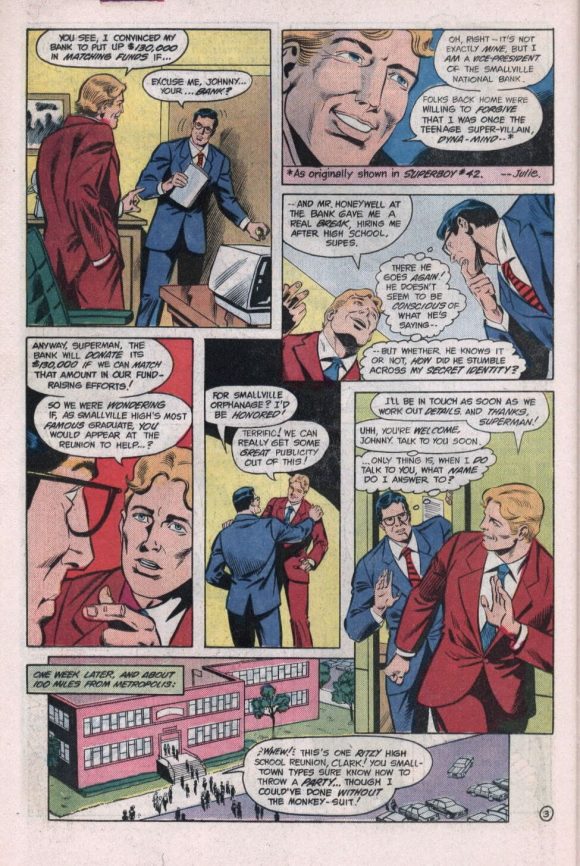
Specifically, the return of Johnny Webber, Clark’s Smallville High classmate who had gained superpowers from a meteor shower and became the super-smart Dyna-Mind, bedeviling the Teen of Steel for three straight issues (TNAOS #42-44, June-August 1983). In this Alex Saviuk/Pablo Marcos-drawn story, grown-up Johnny has gone straight and needs Clark’s help to contact Superman to participate in a fundraiser for Smallville Orphanage, casually referring to the reporter as “Superman” and “the hero from Krypton” in conversation. Clark eventually figures out that rather than purposely trying to out him, Johnny is having subconscious “flashbacks” to knowledge his enhanced brain had picked up all those years ago.
Clark’s solution? “Super-hypnosis!” Yes, I went there.
—
MORE
— PAUL KUPPERBERG: My 13 Favorite Comic Book Back-Up Stories. Click here.
— PAUL KUPPERBERG: My 13 Favorite Unpublished DC COMICS Projects. Click here.
—
Paul Kupperberg has been writing comic books from Archie to Zatanna for 45 years at DC, Archie, Charlton, Marvel, Bongo and others. He is also the author of Paul Kupperberg’s Illustrated Guide to Writing Comics (Charlton Neo Press); I Never Write for the Money… But I Always Turn in the Manuscript for a Check (Comics Career); the comic book industry-based murder mystery The Same Old Story, the short-story collection In My Shorts: Hitler’s Bellhop and Other Stories, and JSA: Ragnarok, all from Crazy 8 Press and all available on Amazon, or signed and personalized direct from Paul (email him at pkupps55@yahoo.com for details).

July 21, 2021
Ha, I’ve read most of these, thanks for the memories. There’s a wee typo in the Flamebird and Nightwing entry, that should be Ken Landgraf.
July 21, 2021
Fixed! Thanks, Martin!